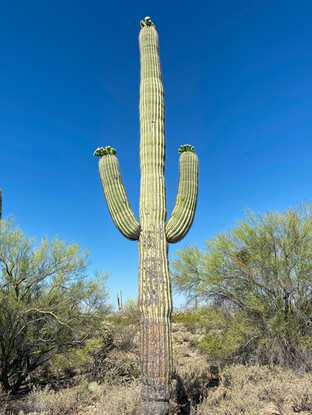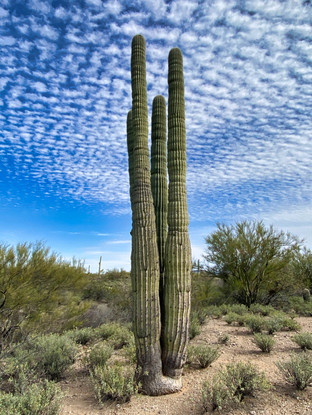In Celebration of Desert Plants
- dougsmith51
- May 15, 2020
- 3 min read
One of the reasons we decided to hunker down in Tucson, Arizona (and wait on COVID-19 developments) was so we could stay at Desert Trails RV Park west of the city. It's a campground we stayed during May 2019 during the two weeks it took to replace our car, and where we arrived again at the end of March 2020 as we moved on from Texas. This was our third visit to the Tucson area in the last four years.
Due to COVID, most of the Tucson tourist attractions we would have visited were closed. However, one of the things we love about Desert Trails RV Park is that the campground has hiking trails leading directly into the desert, and hiking was our primary activity for most of the six weeks we spent in the Tucson area.
[Screen capture below is from the iOS "AllTrails" hiking app which we highly recommend to all hikers!]
The trails in the "back 40" of the campground lead to trails in the 20,000+ acre Tucson Mountain Park (run by Pima County) which eventually lead to trails in Saguaro National Park.

When we first arrived in Tucson, the weather was cool (70s daytime, 40s nighttime), but warmed up considerably during our six weeks there.
There are many types of desert plants, including many different types of cactus.

The archetypical desert cactus is the mighty saguaro (pronounced "suh-wahr-oh"). It only grows in a narrow altitude range, but fortunately the Tucson area is right at that altitude.
Saguaro take many years to grow. In their early years, they typically grow under the shelter of other trees.

They usually do not develop their branch arms until they are at least 70 years old.


Once mature, they flower in the spring like many other cacti species.
Eventually, they die. The foliage decays away, exposing the woody understructure of the saguaro.


One saguaro we would pass on our hikes provided a nest to a family of great horned owls, including two very fluffy chicks.
There were also a lot of cholla cactus varieties. They tend to be very spiky, and you do NOT want to brush up against them.

Another of our favorite plants was the Palo Verde tree, distinctive for its green bark. Much of the year it lies dormant, but brilliant yellow leaves come out in the spring.
When all the palo verdes are blooming, the entire landscape turns yellow.

A unique desert plant is the ocotillo, which is mostly bare except for brilliant red flowers.
The prickly pear cacti were quite abundant, and also blooming during our visit.
Barrel cacti were one of the earliest to bear fruit, which falll to the ground and serve as food for animals.
Finally, many other small cacti, plants, and flowers bloomed during our time in Tucson and brought some joy and wonder to our walks.


We loved staying in Tucson, but by early May it was just too hot for our RV air conditioner to keep up with (100 degrees Fahrenheit or higher every afternoon), and we were limited to hiking only in the early hours of the morning because of the heat and blazing sun. We decided to move on to somewhere with more reasonable temperatures. Santa Fe, New Mexico offered that due to its high elevation (7,000 feet above sea level), and was just a two day drive from Tucson.
More about our time in Santa Fe in our next blog post!









































































Tough to be in one place for so long, but what a terrific opportunity to see the desert in bloom! And to be able to watch an owl family grow! It brings back such vivid memories of our times in Tucson which were often at this time of year to coincide with school spring vacations. We spent many an hour taking the prickles out of my dad's dog or our children's backsides! Looking forward to hearing about Santa Fe. Miss you two.
Spectacular scenery and photos! Glad you two are well and able to continue your adventures!